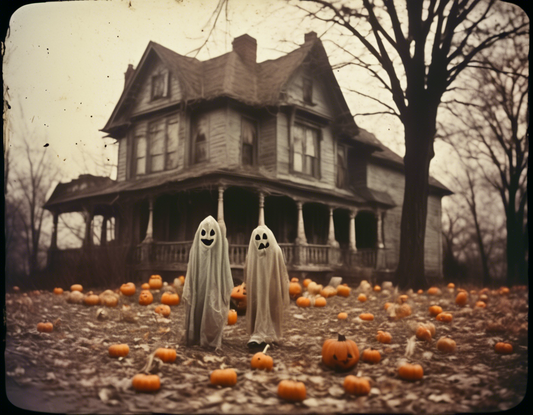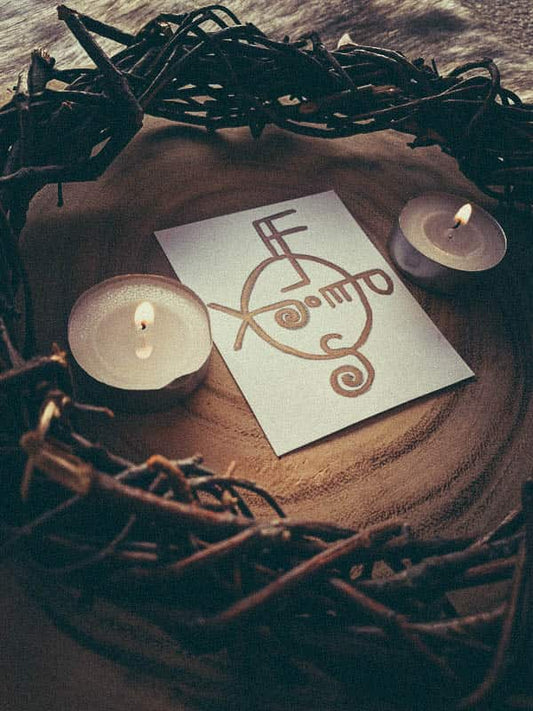𝐌𝐎𝐎𝐍 𝐏𝐇𝐀𝐒𝐄𝐒
As the Moon orbits around Earth and Earth orbits around the Sun, the angle between the Sun, Moon, and Earth changes. As a result, the amount of sunlight that reflects off the Moon and travels to our eyes changes every day. (The Moon itself produces no light of its own.)
We see the Moon’s disk change from all dark to all light to all dark again: This span of time is called a lunar cycle, lunation, lunar month, or synodic month. The length of
the cycle can vary slightly, but on average, it is 29.53059 days.
Astronomers have broken down this cycle into four primary moon phases: New Moon, First Quarter, Full Moon, and Last (third) Quarter.
There are also four secondary phases: Waxing Crescent, Waxing Gibbous, Waning Gibbous, and Waning Crescent.
The primary phases occur at a specific moment, no matter where you are on Earth, which is then converted to local time. (Depending on where you live, you may or may not be able to see the exact moment of a phase, in part because the Moon may not have risen yet in your area.) The secondary phases, however, represent a span of time rather than a specific moment.
𝐍𝐄𝐖 𝐌𝐎𝐎𝐍

This phase is named as such because it starts a new lunar cycle. At this time, the Sun and Moon are in conjunction, meaning that they are closest together in the sky, on the same side of Earth (Sun→Moon→Earth).
From our perspective, the Moon appears totally dark: We can not usually see it because we are facing the Moon’s shadowed side, which does not receive any direct sunlight. But if we were to travel to the other side of the Moon, the part that faces the Sun, it would be totally illuminated. A Full Moon.
Occasionally, if the new Moon’s position lines up correctly between the Sun and Earth, from our viewpoint it will cover part or all of the Sun’s disk, causing a solar eclipse. These events are only visible from a small portion of Earth and require special eye protection to be viewed safely.
The months of some calendars, such as the Chinese lunisolar calendar, begin at the time of the new (or dark) Moon.
𝐖𝐀𝐗𝐈𝐍𝐆 𝐂𝐑𝐄𝐒𝐂𝐄𝐍𝐓

This phase occurs between the new Moon and first quarter phases. At the beginning of this stage, we see a thin, crescent-shape Moon, which, in the Northern Hemisphere, appears on the right side. The lit area slowly widens each day, covering more and more of the right side of the Moon’s surface until the first quarter phase, when the Moon’s entire right side is illuminated. (In the Southern Hemisphere, the same thing happens, only on the left side.)
Some lunar and lunisolar calendars, such as the Islamic (or Hijri) calendar, define the start of a month as when the Moon first becomes visible, which is usually a day or so after the new Moon, during its waxing crescent stage.
𝐅𝐈𝐑𝐒𝐓 𝐐𝐔𝐀𝐑𝐓𝐄𝐑

This phase got its name because at this point the Moon has traveled 1/4 of the way through its orbit. It’s a confusing label, though, because at this time from our perspective, 1/2 of the Moon’s surface is lit. In fact, both the first and last quarter phases are sometimes called a Half Moon.
At first quarter in the Northern Hemisphere, the right side of the Moon is illuminated; in the Southern Hemisphere, it’s the left side. In actuality, we are seeing 1/2 of the lit side of the Moon because the entire illuminated surface is only partly facing our direction. In other words, the Moon is perpendicular to the Earth/Sun line.
During a first quarter phase, the Moon is said to be at east quadrature, meaning that it is 90 degrees east of the Sun when viewed from Earth.
𝐖𝐀𝐗𝐈𝐍𝐆 𝐆𝐈𝐁𝐁𝐎𝐔𝐒

This phase occurs between the first quarter and full Moon and describes the Moon when it is more than half lit, but not yet fully. At the beginning of this stage in the Northern Hemisphere, we see the right half of the Moon illuminated plus a tiny fraction more extending into the left side.
As the days pass, the light creeps farther left, covering more and more of the Moon’s surface until the full Moon phase, when the entire disk is illuminated. In the Southern Hemisphere, the same happens, only from left to right.
“Gibbous” comes from a Latin word meaning “humpbacked,” referring to the curved lit area on the Moon’s surface.
𝐅𝐔𝐋𝐋 𝐌𝐎𝐎𝐍

This phase is named as such because, from our perspective, the full disk is illuminated. At this time, the Sun and Moon are in opposition, meaning that they are farthest apart in the sky, on opposite sides of Earth (Sun→Earth→Moon).
Occasionally, if the full Moon’s position lines up correctly with the Sun and Earth, from our viewpoint, the Moon will enter Earth’s shadow, which will cut off part or all of the sunlight reflected off the Moon’s surface, thereby causing a lunar eclipse.
𝐖𝐀𝐍𝐈𝐍𝐆 𝐆𝐈𝐁𝐁𝐎𝐔𝐒

This phase occurs between the full and last quarter and describes the Moon when it is more than half lit, but not fully. At the beginning of this stage in the Northern Hemisphere, we see a disk almost fully lit except for a tiny sliver on the right side that is in darkness.
As the days pass, the lit area shrinks from right to left until the last quarter phase, when the Moon’s left half is illuminated and the right half is in darkness. In the Southern Hemisphere, the same happens, only the light shrinks from left to right.
𝐋𝐀𝐒𝐓 (𝐓𝐇𝐈𝐑𝐃) 𝐐𝐔𝐀𝐑𝐓𝐄𝐑

This phase got its name because at this point the Moon has traveled 3/4 of the way through its orbit, and has just one more (the last) quarter to complete one revolution. This stage is sometimes also called Third Quarter.
At this stage, we see 1/2 of the Moon’s surface lit. In the Northern Hemisphere, the left side is illuminated; in the Southern Hemisphere, it is the right side. During a last quarter phase, the Moon is said to be at west quadrature, meaning that it is 90 degrees west of the Sun when viewed from Earth.
𝐖𝐀𝐍𝐈𝐍𝐆 𝐂𝐑𝐄𝐒𝐂𝐄𝐍𝐓

This phase occurs between the last quarter and new Moon phases. At the beginning of this stage, in the Northern Hemisphere, we see the Moon’s entire left side almost fully lit and the right side in darkness. The lit area slowly shrinks each day, covering less and less of the Moon’s surface until it looks like a very thin crescent on the left side.
Eventually, the entire disk will be in darkness, at which point it will be the new Moon phase and another lunar cycle will have begun. (In the Southern Hemisphere, the same thing happens, only the lit area would have started on the right side and shrunk from left to right, until a thin crescent remained on the right.) Once the Sun rises, it is not easy to see this slim phase; the best time is before the glare of sunrise.
𝐖𝐇𝐀𝐓'𝐒 𝐓𝐇𝐄 𝐌𝐎𝐎𝐍'𝐒 𝐀𝐆𝐄?
The term "Moon's age" is not a reference to how long the Moon has existed (about 4.5 billion years, if you're wondering), but rather how many days it's been since the last new Moon. As mentioned above, the span of time between one new Moon and the next is called a lunar cycle, lunation, lunar month, or synodic month and on average lasts for 29.53059 days. This translates to 29 days, 12 hours, 44 minutes, and 3 seconds.
For most dates in Moon Phase Calendars, there is listed a number of days, such as “18 days.” This tells us the amount of days since the previous new Moon, or in other words, how many days into the lunar cycle we are—aka, the Moon's age. So, at the new Moon, that day is “0” ; the next day, 1 day has passed; and onward until 29 days pass and we are at the next new Moon. You can also find this information in the print edition of The Old Farmer’s Almanac.
The length of a lunar cycle can vary by more than 13 hours due to a few factors. For example, when the new Moon phase occurs at about the same the time as perigee (the point in the Moon’s elliptical orbit that is closest to Earth), shorter lunations result. When the new Moon phase occurs at about the same time as apogee (when the Moon is farthest from Earth), longer lunations result. This is related to the fact that the Moon travels faster in its orbit at perigee and slowest in its orbit at apogee.
Earth’s relative position near perihelion (point in Earth’s orbit that is closest to the Sun) and aphelion (when Earth is farthest from the Sun) also affect lunation times. The longest lunations result when the new Moon coincides with apogee and Earth is at perihelion. The shortest lunations result when the new Moon coincides with perigee and Earth is at aphelion.
One of the shortest lunations was 29 days, 6 hours, and 35 minutes, whereas one of the longest was 29 days, 19 hours, 55 minutes.
Note: The synodic month describes the time for the Moon to complete one orbit around Earth and return to the same position relative to the Sun and Earth. If Earth were not moving along in its orbit but instead were standing still, the Moon would take less time to reach that same position: This is called the sidereal month, which is about 2.21 days shorter than the synodic month. “Sidereal” means “related to stars”—in this case, the Moon’s position relative to the stars.
𝐖𝐇𝐀𝐓'𝐒 𝐏𝐄𝐑𝐂𝐄𝐍𝐓 𝐈𝐋𝐋𝐔𝐌𝐈𝐍𝐀𝐓𝐈𝐎𝐍?
Percent Illumination tells us how much of the Moon’s disk is lit, as seen from Earth. From new to full, the percentage increases, indicating the waxing stages, and from full to new, the percentage decreases, indicating the waning stages.
The New Moon is 0 percent illuminated (or totally dark); First Quarter is essentially 50 percent illuminated (half of the disk is lit); Full Moon is 100 percent illuminated (the entire disk is lit); and Last Quarter is back to essentially 50 percent illuminated (half of the disk is lit).
We say “essentially” for the quarter phases because technically, at the exact time of the first quarter, a tiny fraction more than half of the Moon is lit, and at last quarter, a tiny fraction less. The Moon is exactly half-lit when it reaches dichotomy, which occurs several minutes before first quarter and several minutes after last quarter.
𝐌𝐀𝐆𝐈𝐂 𝐅𝐎𝐑 𝐄𝐀𝐂𝐇 𝐌𝐎𝐎𝐍 𝐏𝐇𝐀𝐒𝐄
NEW MOON
- New Beginnings
- New goals
- Rejuvenations
- Health
- Prosperity
- Abundance
WAXING CRESCENT
- Growth
- Healing
- Luck
- Inspiration
- Friendship
- Motivation
- Love
- Fertility
FIRST QUARTER
- Blessings
- Rituals
- Protection
- Divination
- Communication
- Clarification/truth
- Repair
WAXING GIBBOUS
- Spiritual growth
- Inner peace
- Resolution/resolve
- Cleansing/healing/restoring
- Promotion
FULL MOON
- Divination
- Spiritual communication
- Connection
- Guidance
- Fertility
- Bonding
- Banishing
WANING GIBBOUS
- Peaceful separation
- Moving-on
- Resolution
- New growth from loss
- Rebirth
LAST (THIRD) QUARTER
- Transformation
- Emotional reset
- Balance
- Release
- Unbinding
WANING CRESCENT
- Removal
- Banishing
- Binding
- Hexing/cursing
- Cord cutting
- Separation
Many witches use the moon phases and it's energy within their practice and to assist with spells, magic work and intuition.
One of the beginner tips is to learn about the moon and it's magic, so educating yourself on one of Mother Nature's gifts can prove to be very powerful to you.





